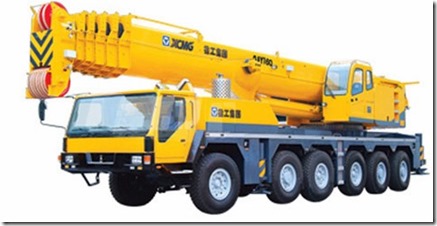Ever thought of what was the world was like before we were able to lift construction equipment mechanically? Well, you’d probably have to go back a very long way to reach that point. For all we know, prehistoric peoples might well have invented some sort of leverage device to relieve their aching backs from the strain of lifting boulders and dinosaur carcasses.
We do know though, from excavations at ancient sites, that the ancient Greeks and Romans certainly had quite sophisticated crane-like tools, including winch and pulley systems, which were probably used to lift the heavy stone blocks necessary for building temples. Structures built by the Greeks, like the Parthenon in Athens, show what good uses they were put to.
The Romans who followed came up with their own variations, which allowed one person to lift up to 150kg. They also devised the treadwheel, a device whereby just two men could lift up to 6,000kg. This allowed them to build structures like the Colosseum in Rome and the mighty Septimius Severus Arch in Libya.
To understand the development of mobile cranes though, we have to look to the Industrial Revolution of the early to mid nineteenth century. This period of rapid technological development and expansion accelerated the steps towards the kind of machinery that we would recognize in the mobile crane hire industry today.
The demands of the Industrial Revolution
The Industrial Revolution began in the United Kingdom but quickly spread to the United States and Western Europe. It heralded the introduction of new manufacturing processes, including the move from hand production to machine generated products, and the advent of new chemical manufacturing and iron production processes.
These advances were aided by the increasing use of steam power, which drew on fuels such as coal. The first steam-operated cranes were developed by a German company in the 1830’s and started to be mass-produced in the 1840’s. They dramatically decreased the number of men needed to operate lifting machinery, and also increased the load such equipment could bear.
In 1838, the industrialist William Armstrong designed a hydraulic water powered crane for loading coal onto barges at the quayside in Newcastle, U.K. It was so successful that his company immediately received orders, for the same model, from the city of Edinburgh, Northern Railways and Liverpool docks. By the early 1860s, Armstrong was employing 4,000 workers and producing over 100 cranes per year. One of his products, commissioned by the Italian Navy in 1883, was still in use in Venice up until 1950s and is still in situ today, although it has fallen into a state of disrepair.
Mobile Cranes
A major problem with the nineteenth-century cranes, however, was that they were static, and so relatively inflexible. Eventually, manufacturers started to fix the structures onto flatcars (railway rolling stock consisting of a flat deck mounted on a pair of bogies), which gave some limited movement. But it would take the involvement of the internal combustion engine, in 1922, along with the invention of telescopic jibs, to really start revolutionizing things in the construction industry.
To cope with the increasing demands of post-war reconstruction and rebuilding work in the early-1950s, a group of men, namely crane expert R.H. Neal, hydraulics genius F.Taylor and designer Bob Lester, came together to create the first of the modern-style industrial cranes with fully telescopic booms, followed some years later with versions that also included a four-wheel drive capability. And so, the truly mobile crane was born. Over the years it has developed and evolved into many forms to meet the demands of modern construction, which requires equipment to be both robust and also as flexible as possible to complete the huge variety of jobs it is required to undertake.
Today, skylines dotted with the cranes, from Kuala Lumpur to Dubai, are a sign of that city’s popularity and prosperity. The workhorses of modern construction have become powerful symbols of success.







Leave a Reply
You must be logged in to post a comment.